See What America Looked Like During The Turn Of The Century
When American history is studied, the time immediately following the turn of the 20th century tends to be a little under-explored compared to life before and after that period. Although Theodore Roosevelt’s presidency is certainly remembered fondly, he’s one of the only aspects of the period between the Civil War and World War I that people commonly remember.
Since America was going through significant changes at a time when the camera was becoming more widely available, however, there was much about the lives Americans led that we can now study today. Indeed, the period had more going on that it may have seemed.
At Long Last, Humanity Achieves Flight
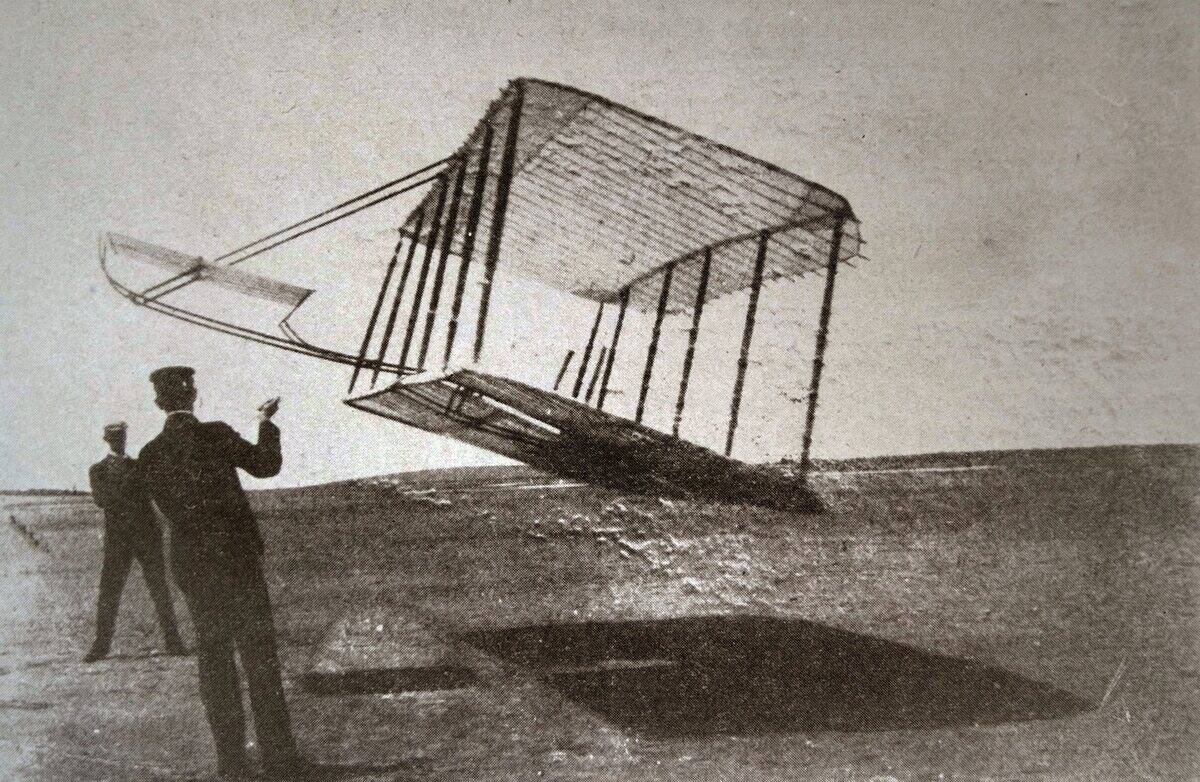
Throughout the late 19th Century and the first years of the 1900s, inventors the world over were puzzling over what kind of machine would allow people to fly as the birds do. Naturally, this meant that some designers tried to imitate the mechanics of flapping wings for their inventions, only to find them ineffective.
However, when Wilbur and Orville Wright tested their now-famous design out in Kitty Hawk, North Carolina, in 1903, they discovered and perfected a working glider that used the wingspan of birds without directly trying to imitate the creatures.
The Fight Against Smallpox Was No Longer A Losing Battle
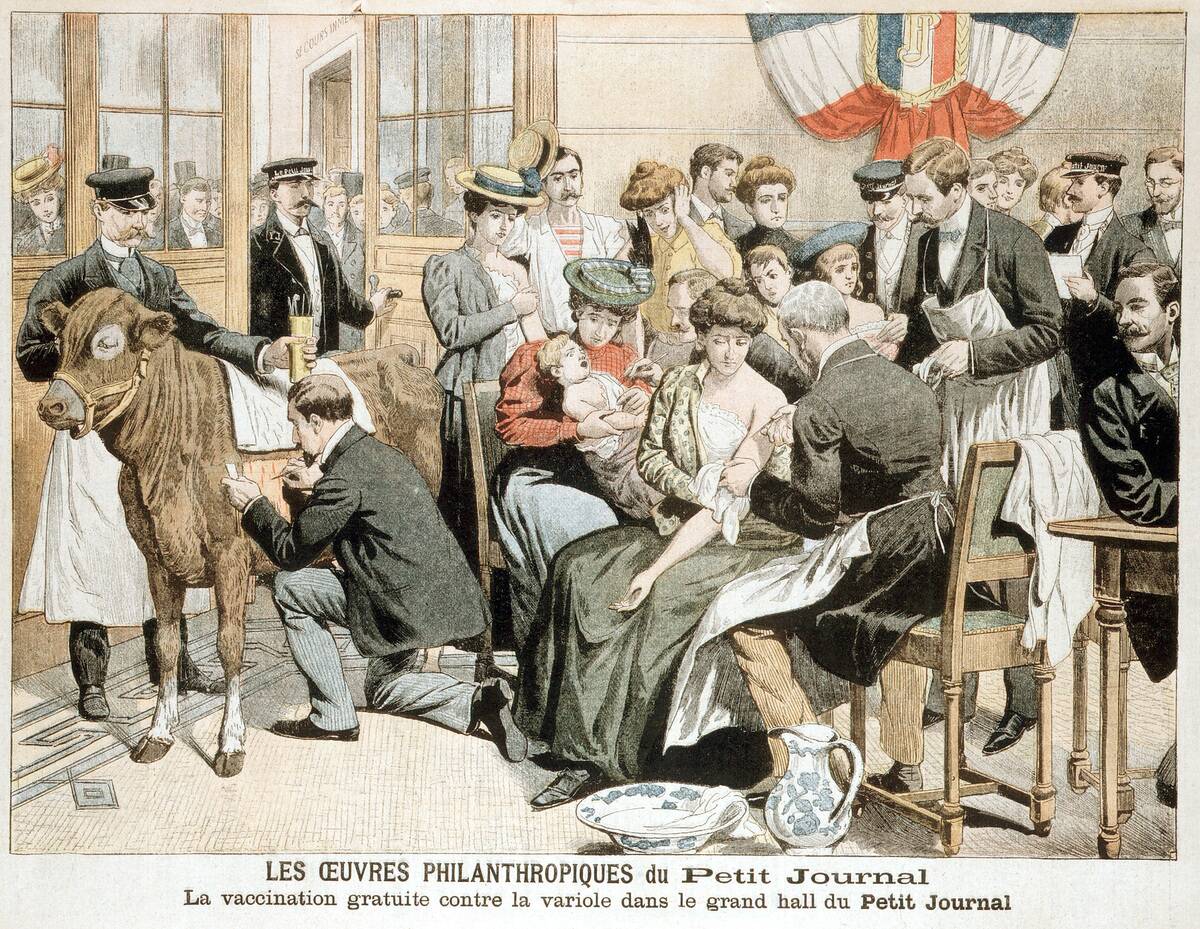
Although smallpox vaccines had existed before the scene depicted in this 1905 illustration from Le Petit Journal Paris, previous decades had found that it was hard to ensure their potency due to unreliable and comparatively primitive storage systems and the fact that they weakened over time before injection.
However, enough advancements had occurred by the turn of the century that this French newspaper could open its offices to provide a free clinic expressly for the purpose of receiving smallpox vaccines after a synthesis that involved this cow’s blood. Although some European regions eradicated smallpox during this time, the U.S. would take a more few decades to achieve this across its vast territory.
A Key Time For Industrial Expansion
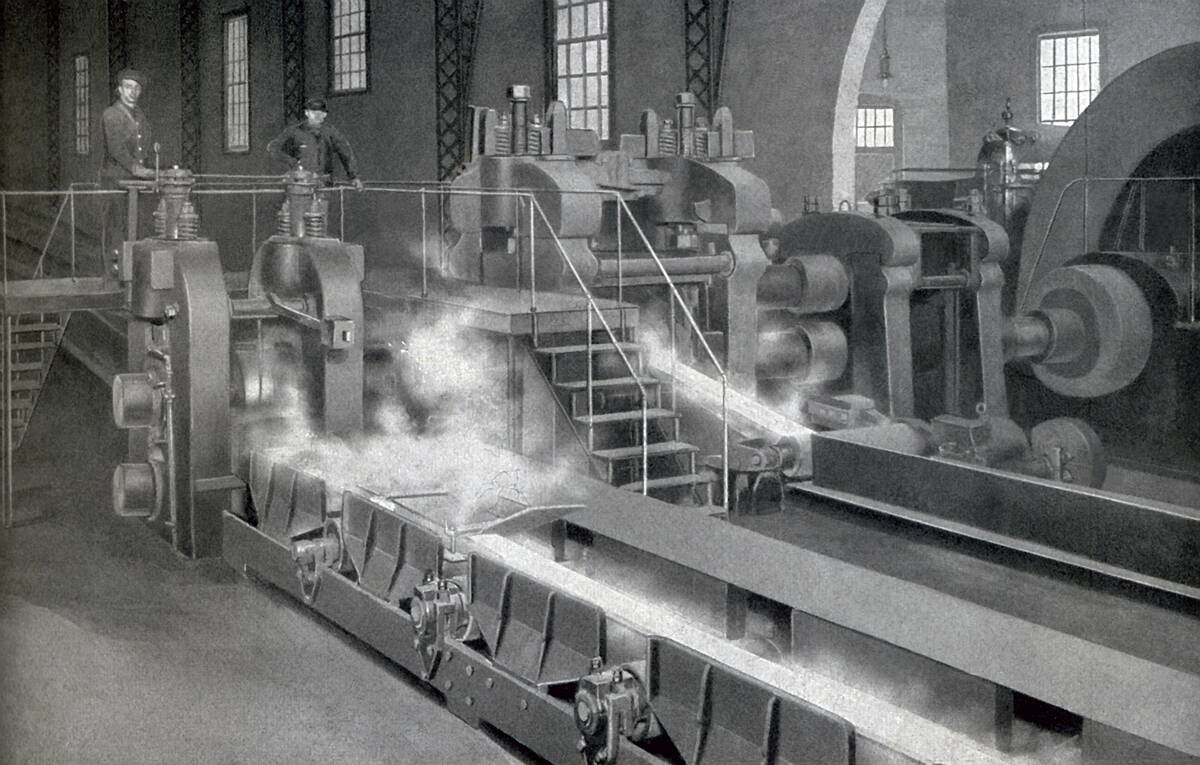
This is the scene at the turn-of-the-century operation owned by the Inland Steel Company, which had just one steel mill in East Chicago, Indiana, at the time. Throughout much of the 20th Century, steel would become one of America’s most famously sought-after products, and this mill showed what that industry was like at the ground floor.
Of course, it also showed the environmental impacts of a rapidly expanding industry like this, as the process of converting iron ore to steel produced a sizable amount of waste. A large landfill was described as running out toward Lake Michigan at the time, which wasn’t nearly as controversial as the practice would later become.
Child Labor Was Simply A Fact Of Life At The Time
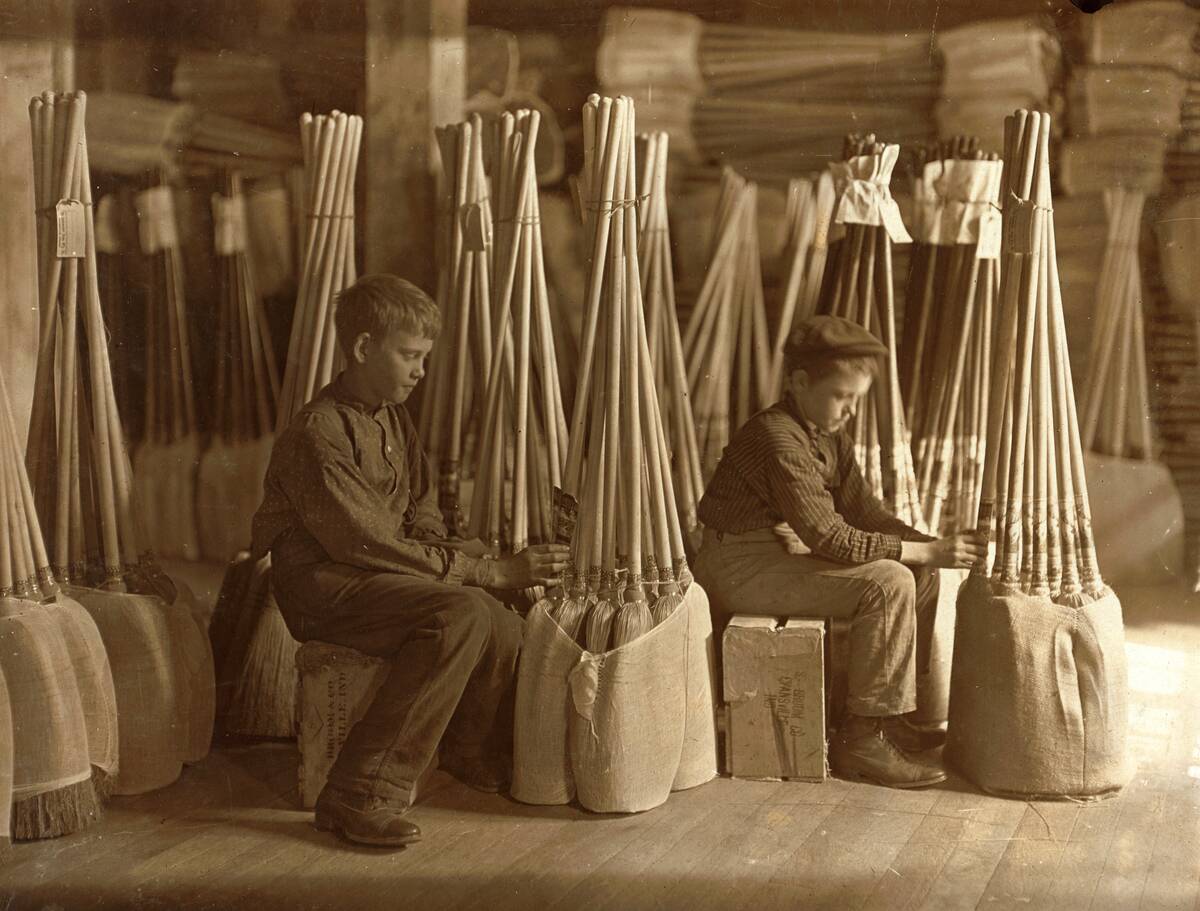
Throughout the 1900s, about 78% of children between five and 17 were enrolled in school. If a child in modern times went back to the period, they would also find that the school year was shorter and that children of the era didn’t have to attend even these shortened terms as often as they do now.
While the other 12% of children at the time almost certainly would be working like these young packers were, that difference in school time likely meant that even school children could be employed as well. That changed with the child labor laws introduced by the Fair Labor Standards Act of 1938, but these children would be close to middle age by then.
Children’s Fashions Were Adorable
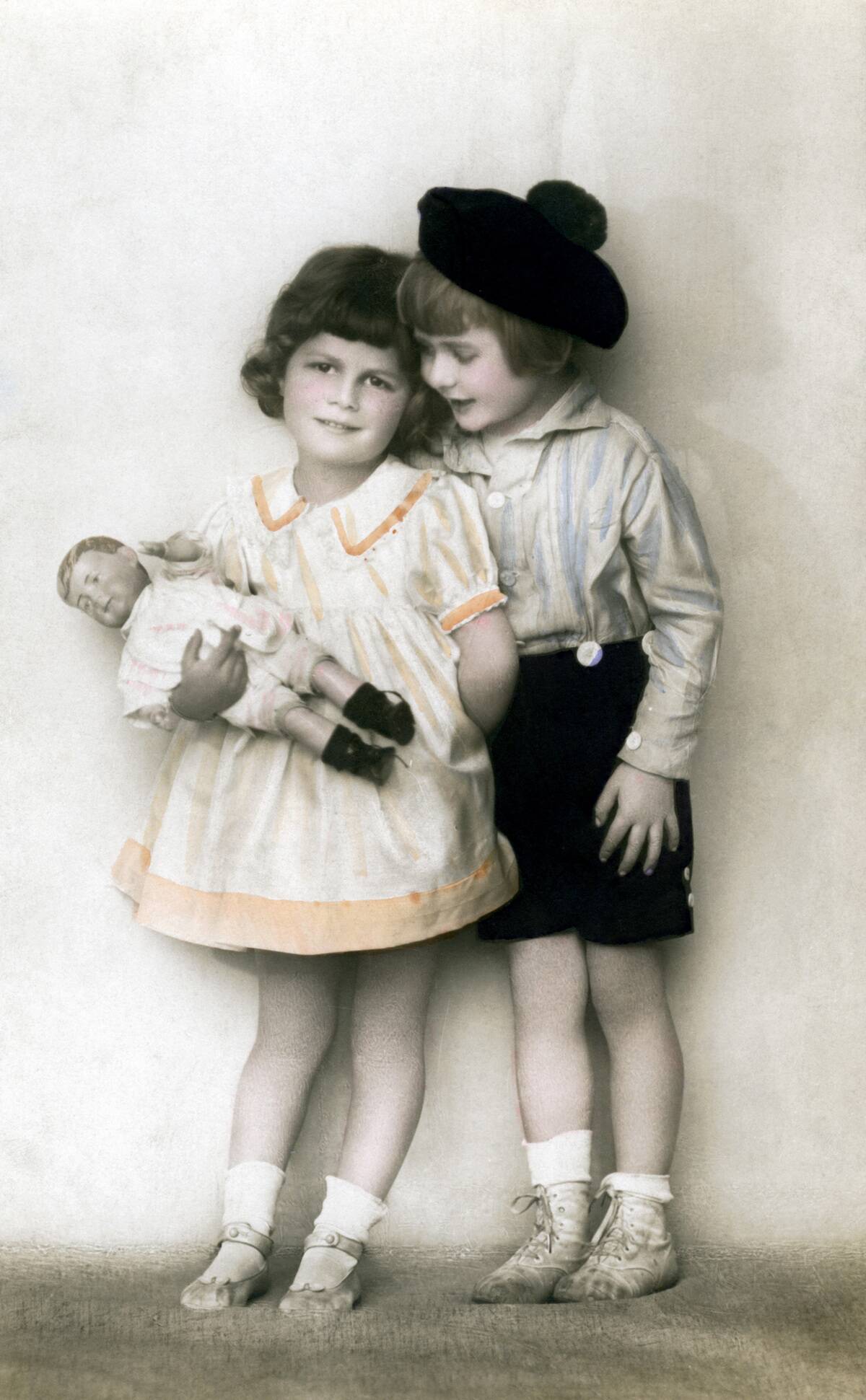
Although it’s truly that the dolls little girls loved at the turn of the century often have a way of looking creepy to modern eyes, the same can’t always be said for the clothes their parents dressed them in.
While this simple but darling dress likely isn’t so different from what most people would expect of the period, the little buttons and buckles strewn throughout the boy’s clothes wouldn’t be as common in future decades. The little hat he’s wearing would be adorable in any era, though.
Beach Culture Was Very Different Back Then
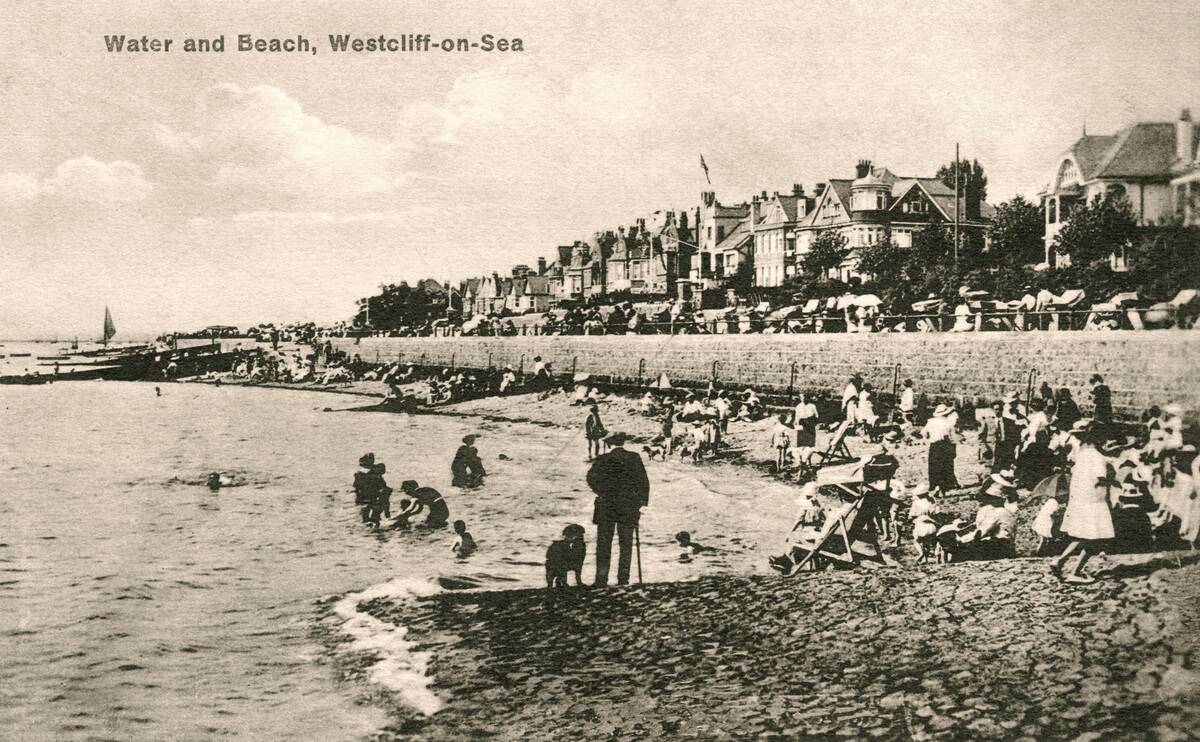
Although this photo shows that beaches were as popular in the 1900s as they are now, it might be a little hard for modern folks to imagine why. As it turns out, the modesty standards of the time had a way of putting a damper on how much fun you could have there.
After all, you might notice that only a few people are actually playing in the water while the rest stand around. Bathing suits that show skin would have scandalized everyone at the time and most people weren’t exactly trying to get the nice clothes they could wear wet. Hence, these awkward gatherings at the edge of the water.
This Exagerrated Photo Probably Still Wasn’t Too Far Off
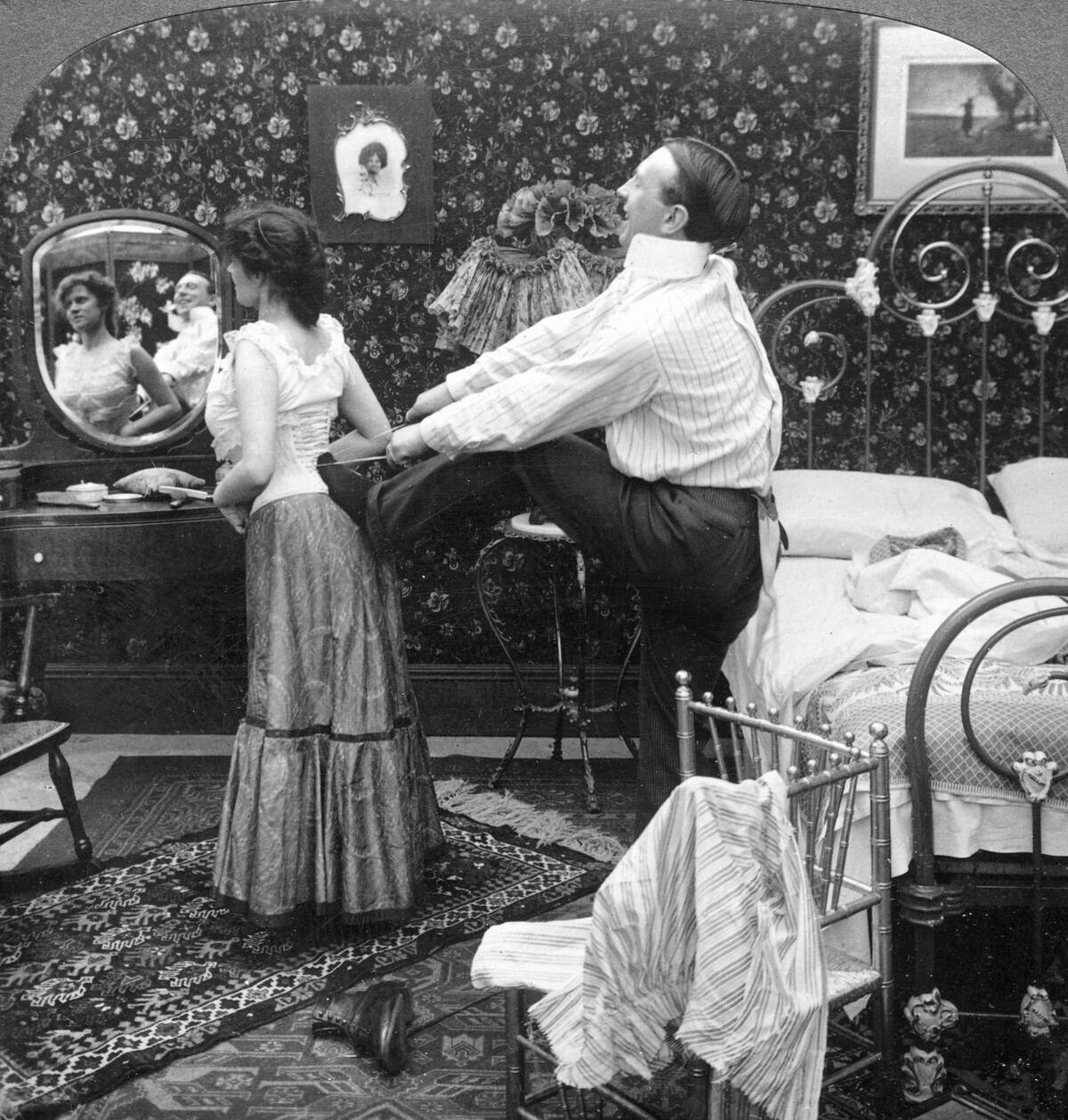
Although this photo was staged, it nonetheless showed how difficult women’s fashions could be to wear during the 1900s. The tight, bracing corsets of the past had yet to go completely out of style. This change would start to happen by the 1910s, when girdles and bras became more popular.
At the same time, the harmfully restrictive corsets of the past were largely understood to be untenable by the turn of the century. That means this woman is likely wearing what would later be called an “S-bend” corset, which was supposed to be a healthier alternative to the traditional garment.
Oil Work Was As Dangerous As It Got
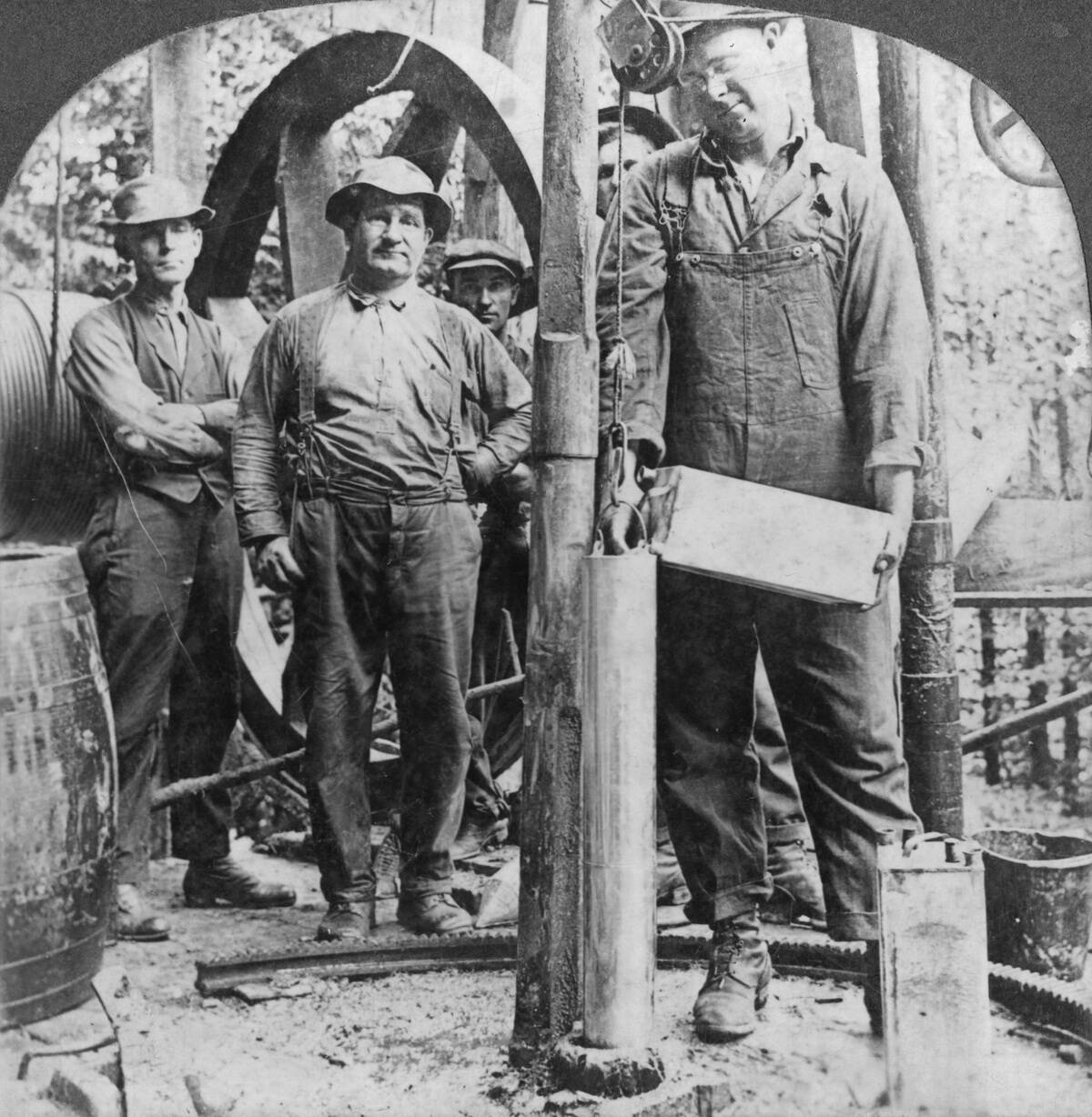
Although it’s certainly not unheard of for horrific accidents to occur on modern oil fields, over a century of safety standards has a way of significantly minimizing that danger. In the 1900s, however, fatalities among men like the ones working this Pennsylvania oil field were far more commonplace.
There are a hundred things that can go fatally wrong on an oil field, but a particularly dangerous step came from “shooting” the well in the early process of working it. As the man at the front is demonstrating, this involved the use of notoriously powerful and volatile nitroglycerin.
A Cozy Domestic Life
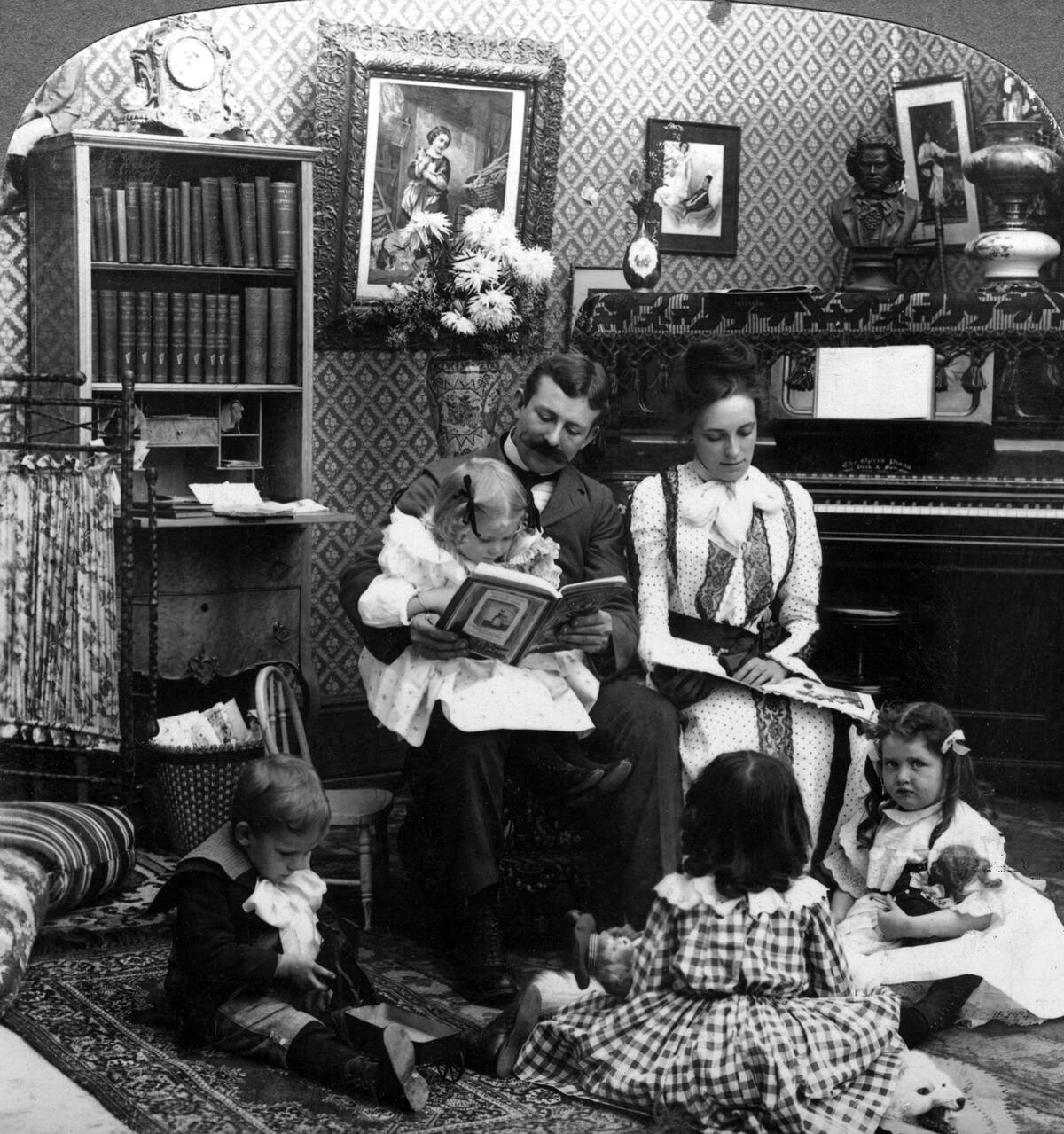
Although this photo is likely staged, it nonetheless provides a view of a common domestic evening in 1900s America. While the family might dress down a little more in their actual homes, little else about this seems all that out of place.
The bust of Beethoven is certainly an attractive piece of home decor, but this especially emphasizes that people didn’t have many entertainment options back then. Aside from a collection of books like this family has, the only other real option was to amuse yourself, say with that piano in the background.
The Work Was Hard And The Tools Were Simple
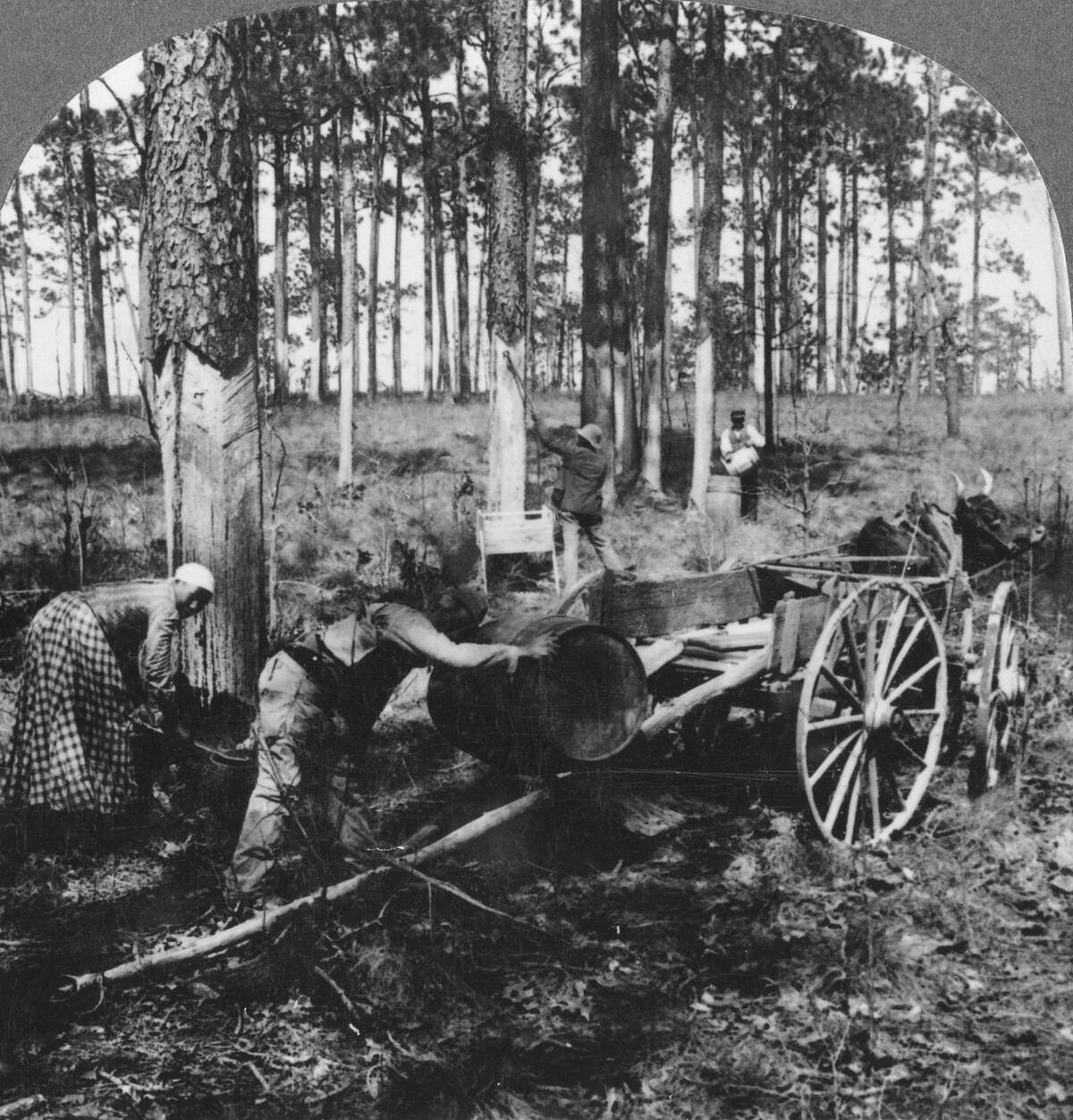
Here, we can see a group of people working in North Carolina’s Great Pine Forest to extract resin used for making turpentine. If they have to bend down as much as it seems they do here, this is clearly pretty backbreaking labor.
And as we can see, it’s not like they have much else to work with besides their own two hands. They have a tool to extract the resin, barrels to put it in, and carts to move them, but that seems to be about it.
Staged Photos Like This Were Fun To Experiment With
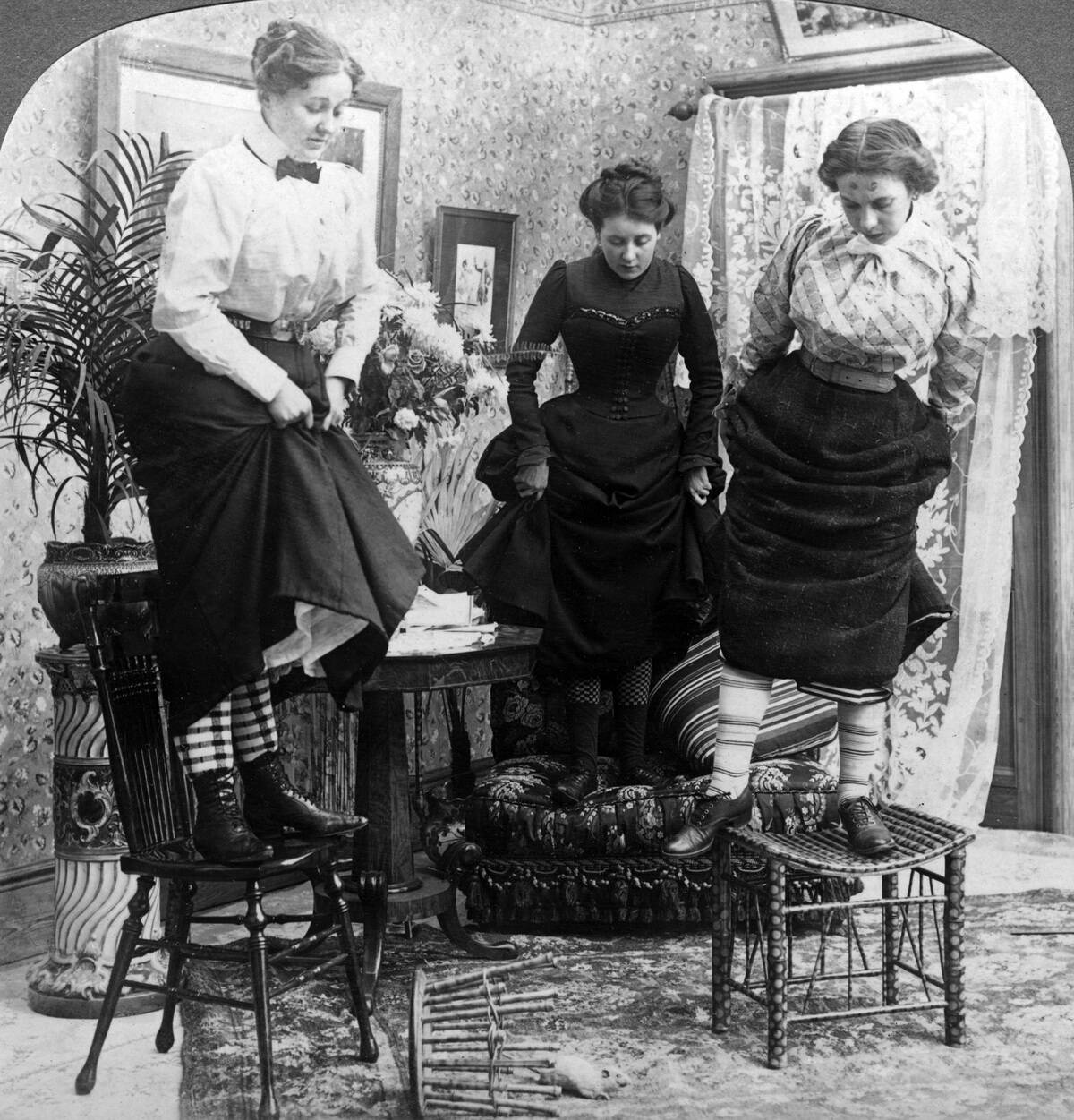
Since most people didn’t have their own cameras by the turn of the century, it wasn’t unusual for curious citizens to try little scenarios out in photo studios. These experiments were a lark at the time but they’re also charming and often mysterious in retrospect.
Here, we can see three women standing on chairs out of concern that a mouse is about. Of course, the mouse is clearly artificial, which means that what they’re really doing here is as well.
Staged Photos Could Also Tell Little Stories
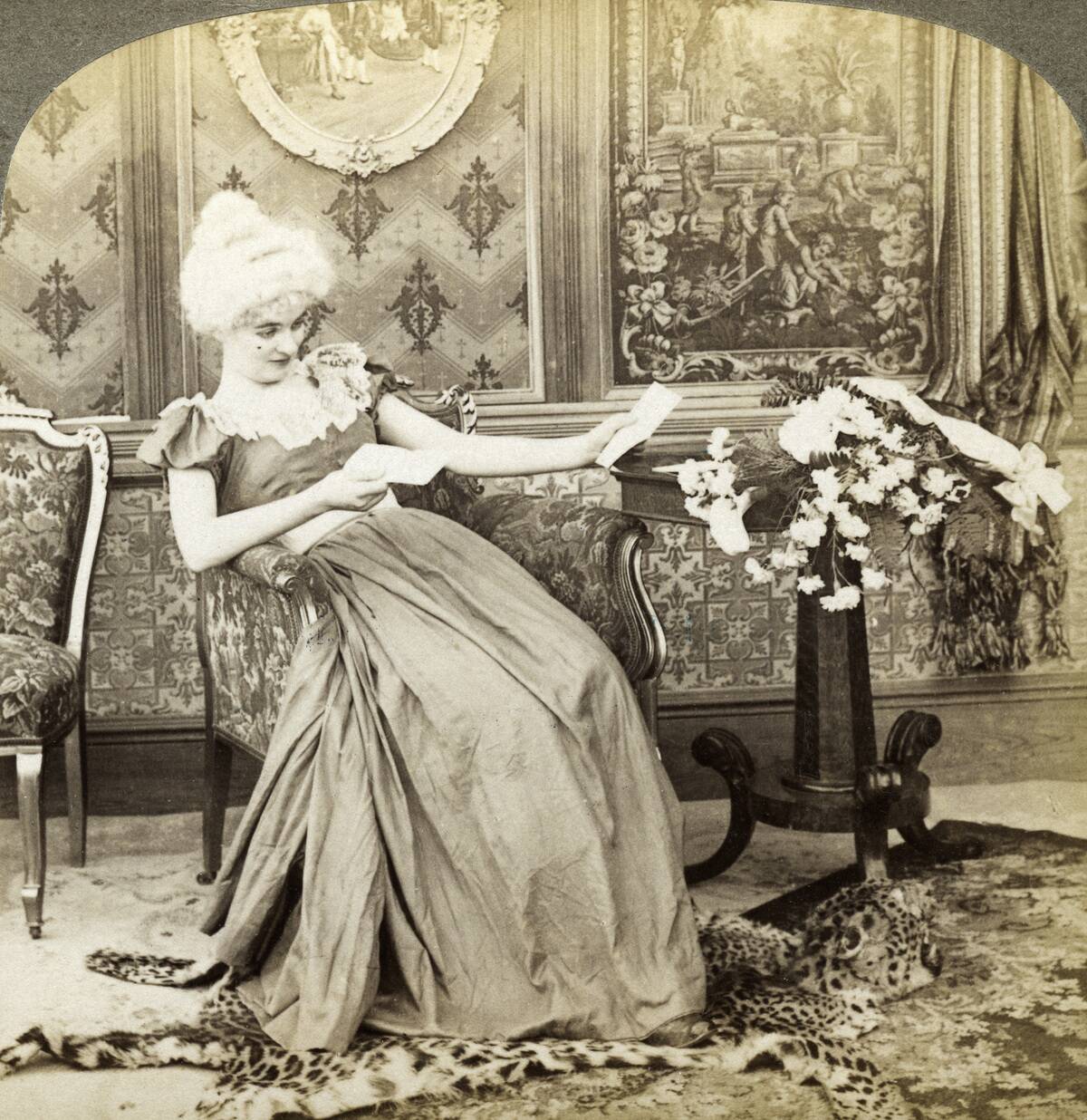
Although a picture may be worth 1,000 words, that still amounts to a fairly brief story. Indeed, the staged photos that people would play around with in the 1900s would have to communicate their mini-narratives clearly, as the idea of filming them was still a ways off for all but an inventive few.
In this case, this woman is portraying a young colonial woman in a photo taken at a studio owned by Underwood & Underwood. As its title suggests, she’s in a dilemma. Two men have sent her letters proposing marriage, and she’s unsure of which to choose.
Dress Standards Of The Day Were Hard To Deal With
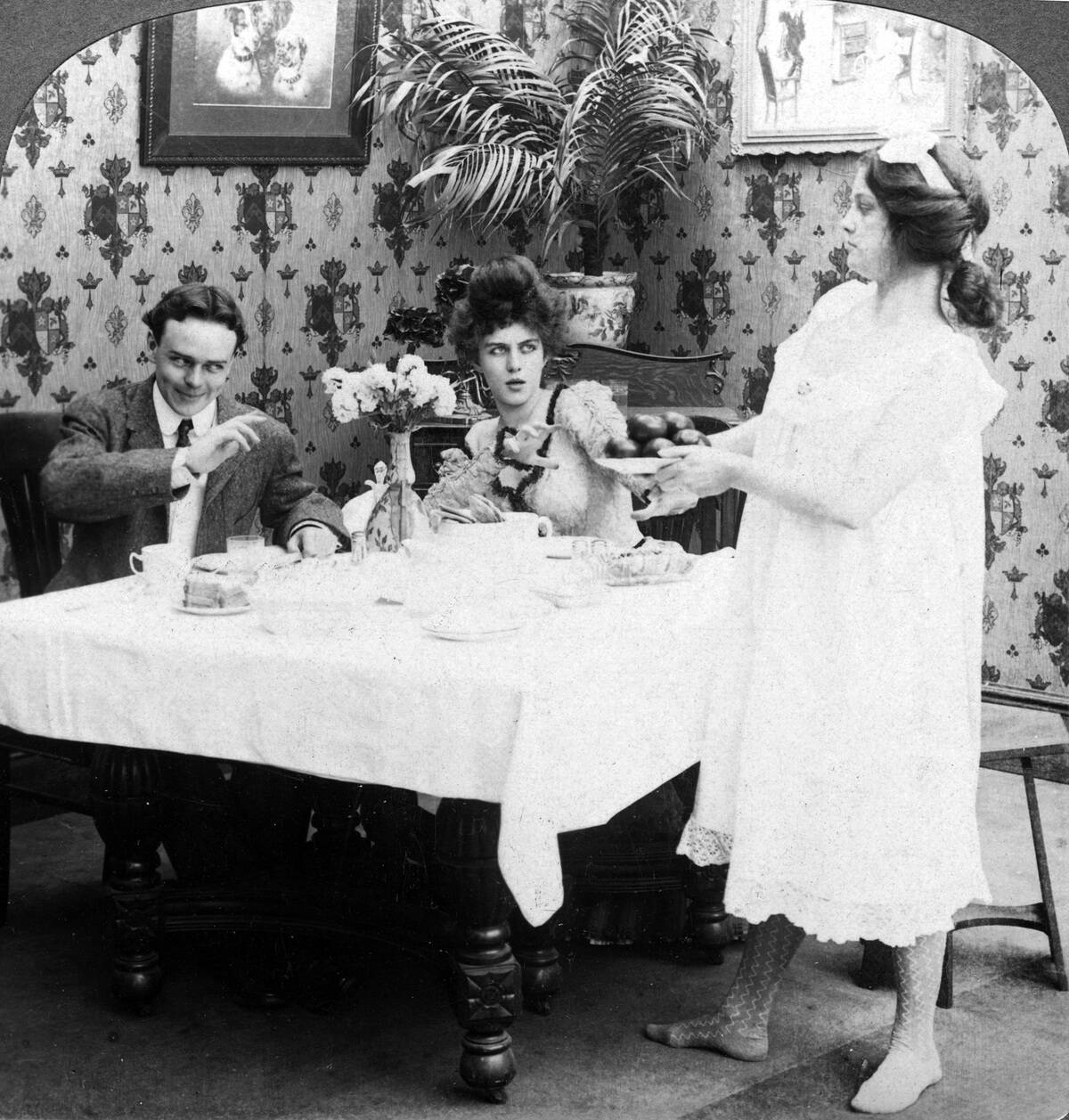
Interestingly, there were multiple staged photos throughout the 1900s featuring different people that carried the same title: “How Biddy Served The Tomatoes.” Considering how the woman serving them could hardly be considered “undressed” by modern standards, it’s hard not to assume they meant the tomatoes were unseasoned.
However, the other woman depicted in this photo is scandalized for the same reason the man looks amused. Biddy is not properly dressed for service because she’s in her bedclothes, which means that she might as well not be dressed at all, as far as her employers are concerned.
It Looks Both Fancy And Intimate At The Same Time
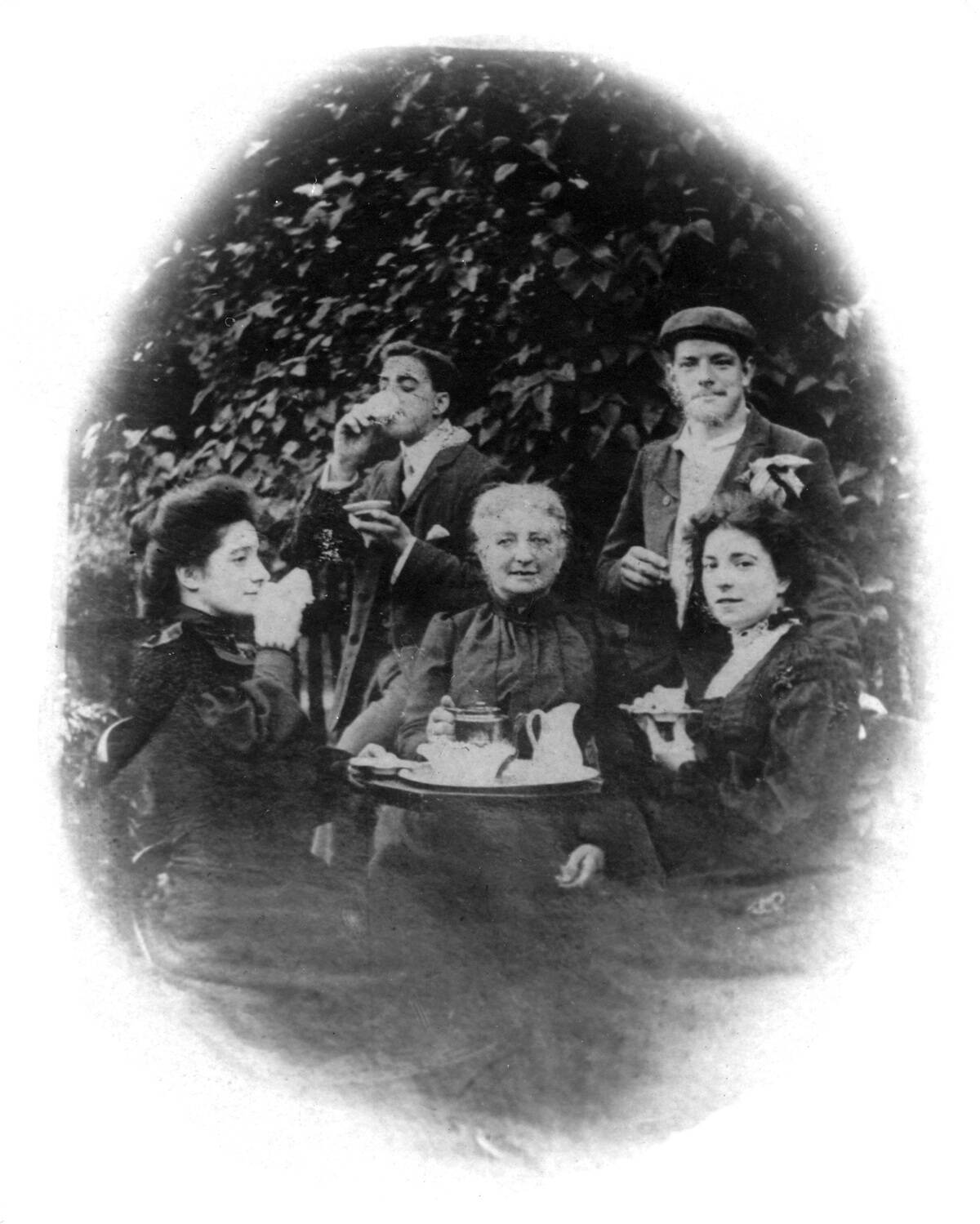
Since people in the 1900s dressed this nicely even when they were just visiting friends, this gathering likely isn’t quite as formal as it looks. There’s a warm, convivial atmosphere to everything that makes it clear why they wanted to commemorate this moment.
This is the scene of a tea party that took place in San Francisco, though it’s hard to get more specific for when this was taken than “early 20th Century.” It feels like there aren’t many tea parties outside of the ones children throw with their toys anymore.
This Was As Efficient As Factories Could Often Get
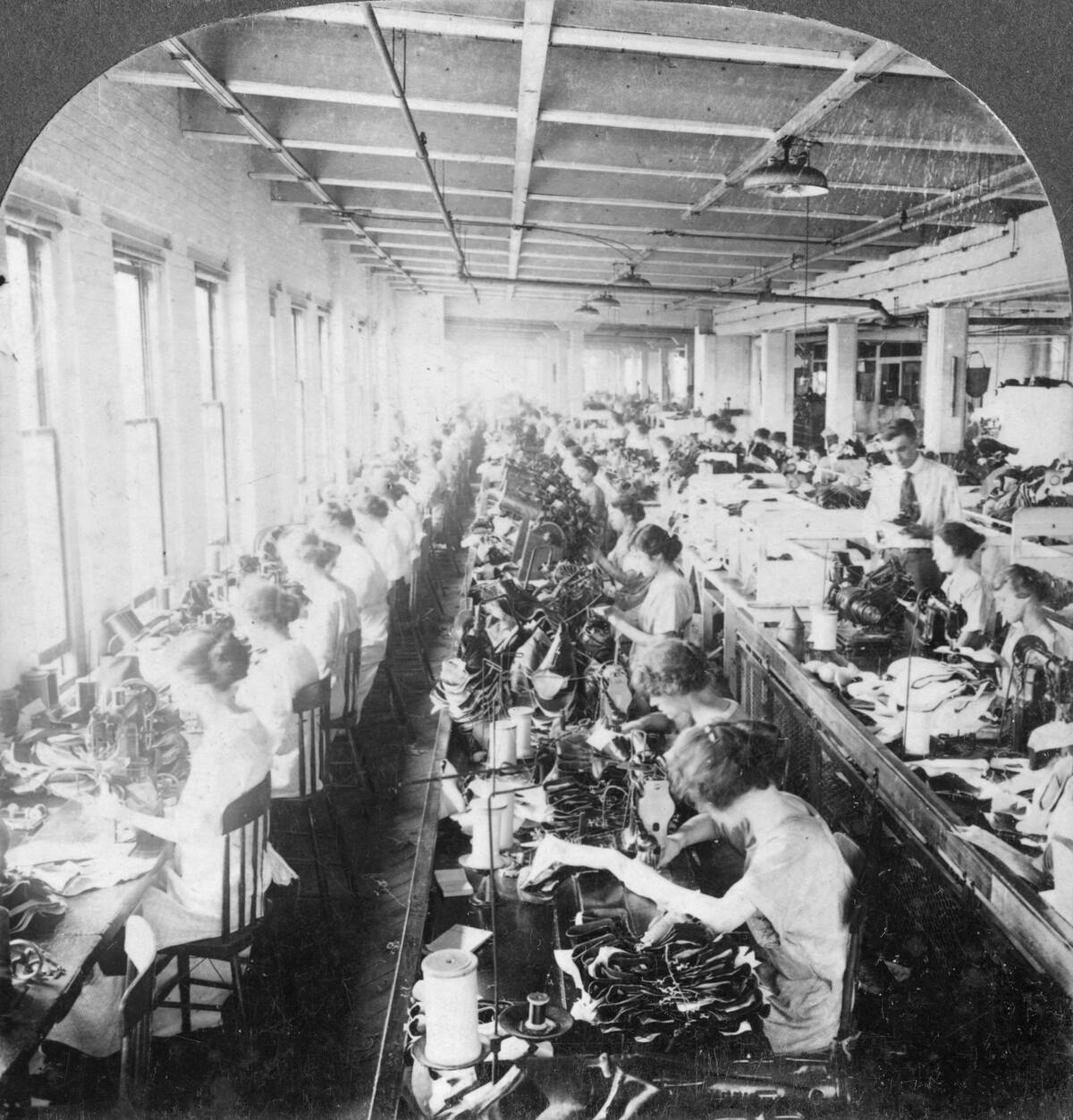
While it may not come as a surprise to hear that this photo was taken at a shoe factory in Syracuse, New York, it may be a little jarring to consider that we’re only looking at the factory’s sewing room.
Although they’re doing so with the aid of sewing machines, the fact that there are women sewing shoes together as far as the eye can see in this photo shows the incredible scale that factories like these produced at during the decades that followed the Industrial Revolution.
This Was A Very Different Skyline Back Then
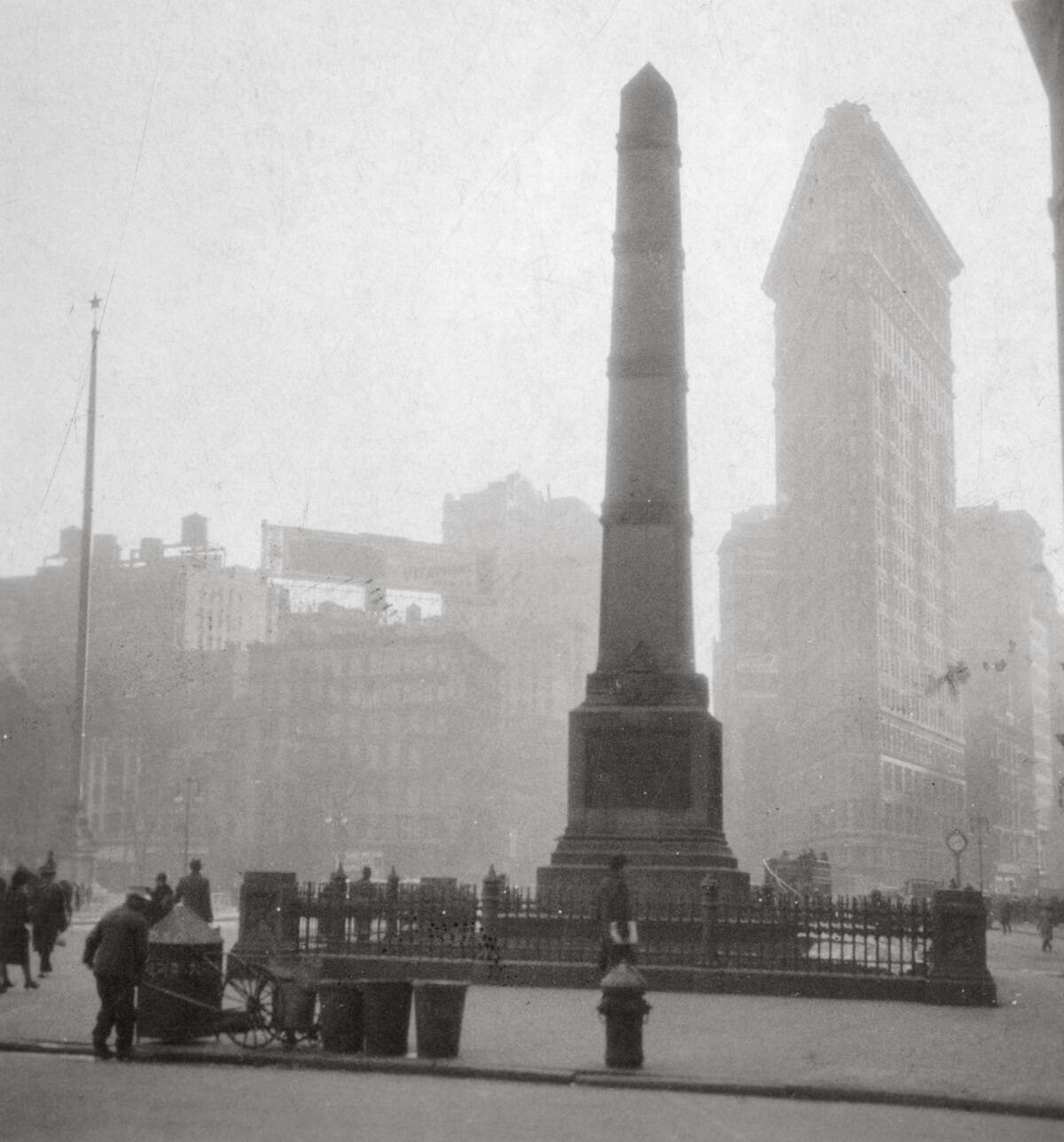
Since it’s possible to see the sky over all these buildings and the most iconic of them is shrouded in fog, it’s worth mentioning that this is New York City’s bustling Manhattan borough. As this photo demonstrates, it’s a lot more bustling now than it would have been at the time.
At the time this photo was taken, the Flatiron Building at right was one of the tallest buildings in New York. It would have been a new one at the time as well, since construction finished in 1902. Even the Empire State Building wouldn’t exist for almost 30 years.
The View Of A Future State’s Streets
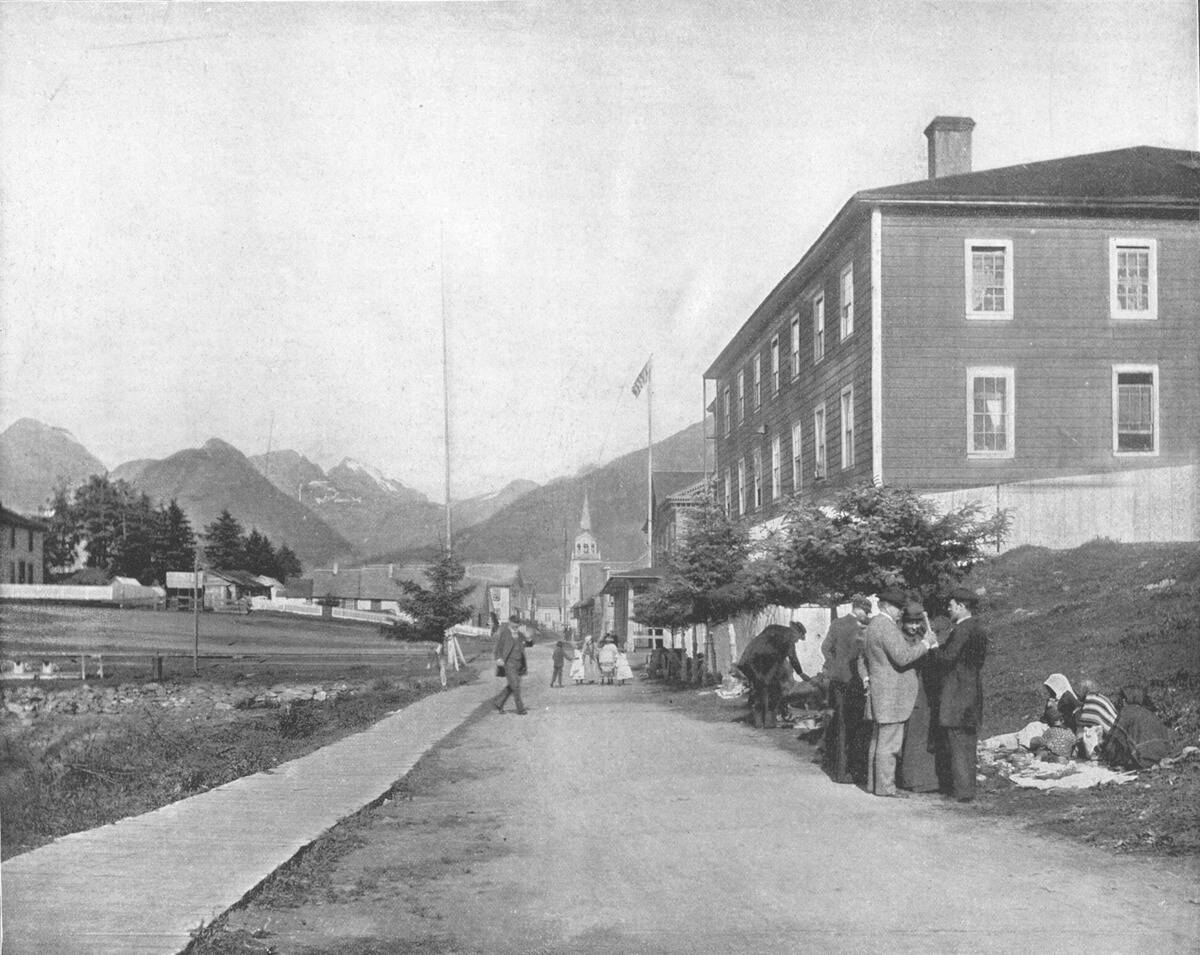
Although Alaska was considered American territory by the 1900s, the nature of what that meant was still very much up in the air at the time. We can see that the streets of Sitka look as developed as any city throughout the Lower 48 would have been at the time, but the gold rush of the 1890s likely had an impact on that.
If those living here would have liked to see Alaska become a U.S. state, few of them would have likely lived to see it. That’s because Alaska didn’t achieve statehood until 1959, at least a half-century later.
A Stroll Through One Of America’s Oldest Parks
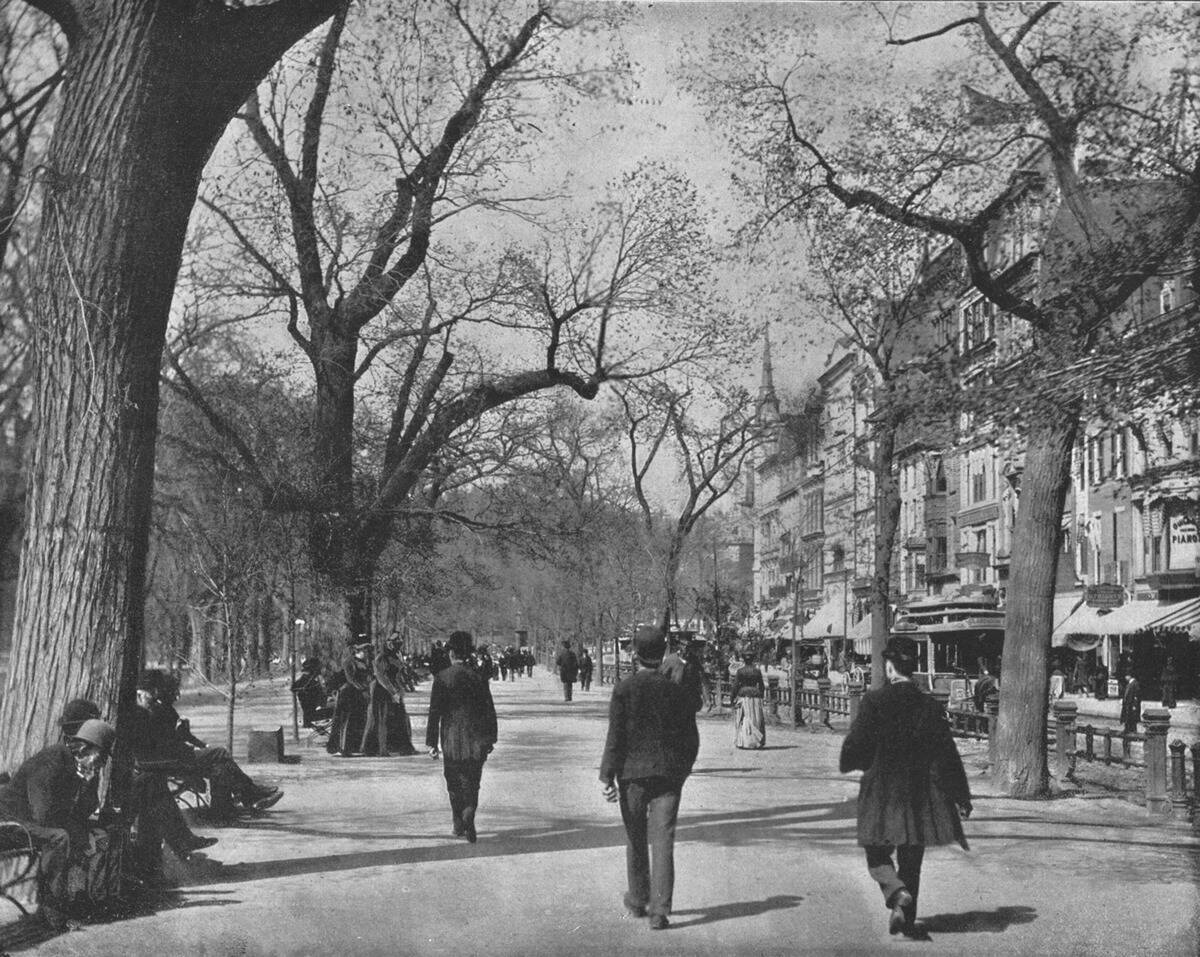
Those who visit Boston will often hear about the Freedom Trail that takes tourists around some of the most significant landmarks of the Revolutionary War such as the Old North Church. That trail starts right here in Boston’s famous park, The Common.
Given the emphasis on natural features, the actual park itself doesn’t look terribly different from how it did when this photo was taken around 1900. The benches have likely been replaced since then and you’re unlikely to see people dressed like this in the area now but the scenery is very similar.
Even Now, It’s Clear This Driver Is Waiting For A Rich Man
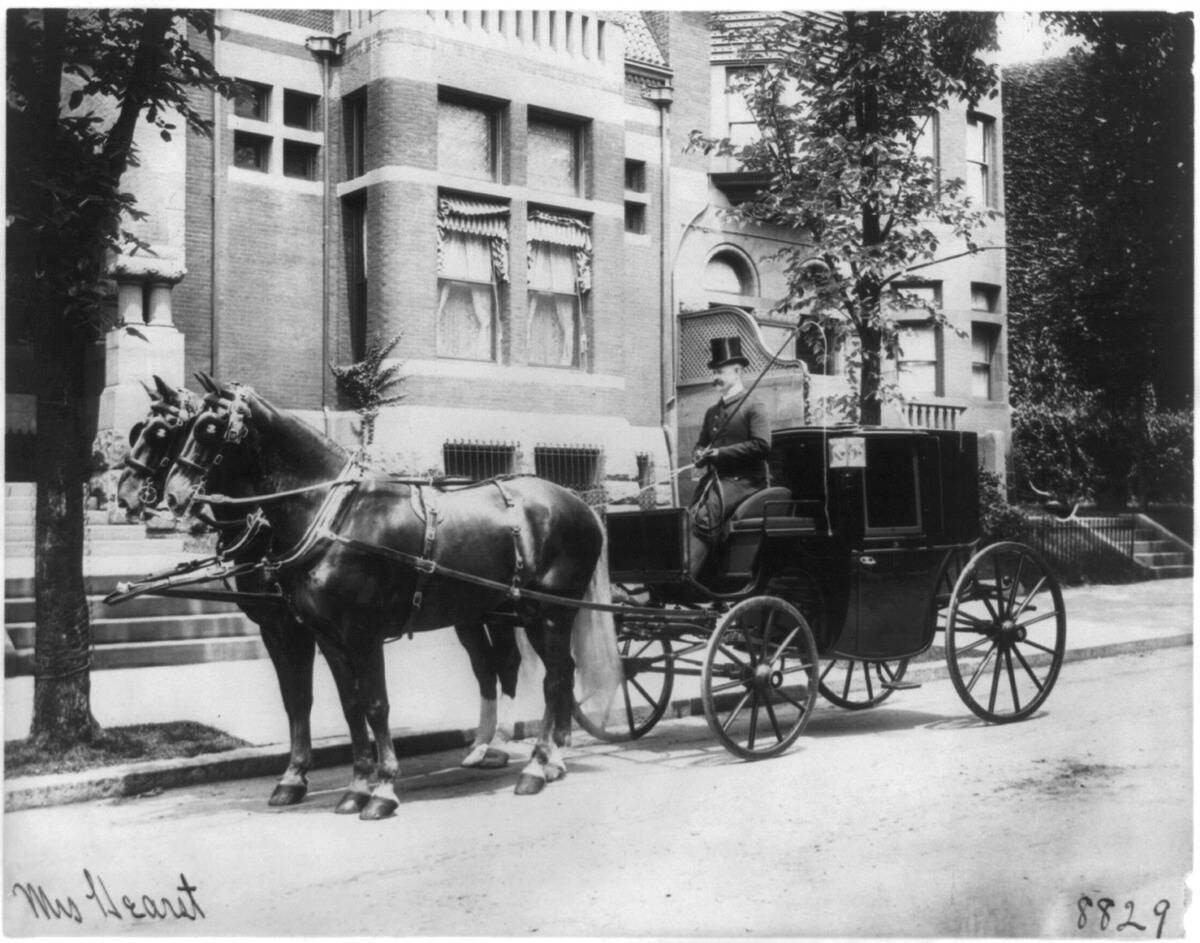
Although the building that infamous newspaper tycoon and politician William Randolph Hearst is most known for is the grand castle he had built in San Simeon, California, construction wouldn’t start for almost 20 years by the time this photo was taken.
Instead, this driver was waiting for Hearst or a member of his family to enter the carriage outside of the billionaire’s home in Washington, D.C.. It’s hard not to wonder how long Hearst kept him waiting there before he and his guests arrived.
Theater Was Still A Dominant Form Of Entertainment
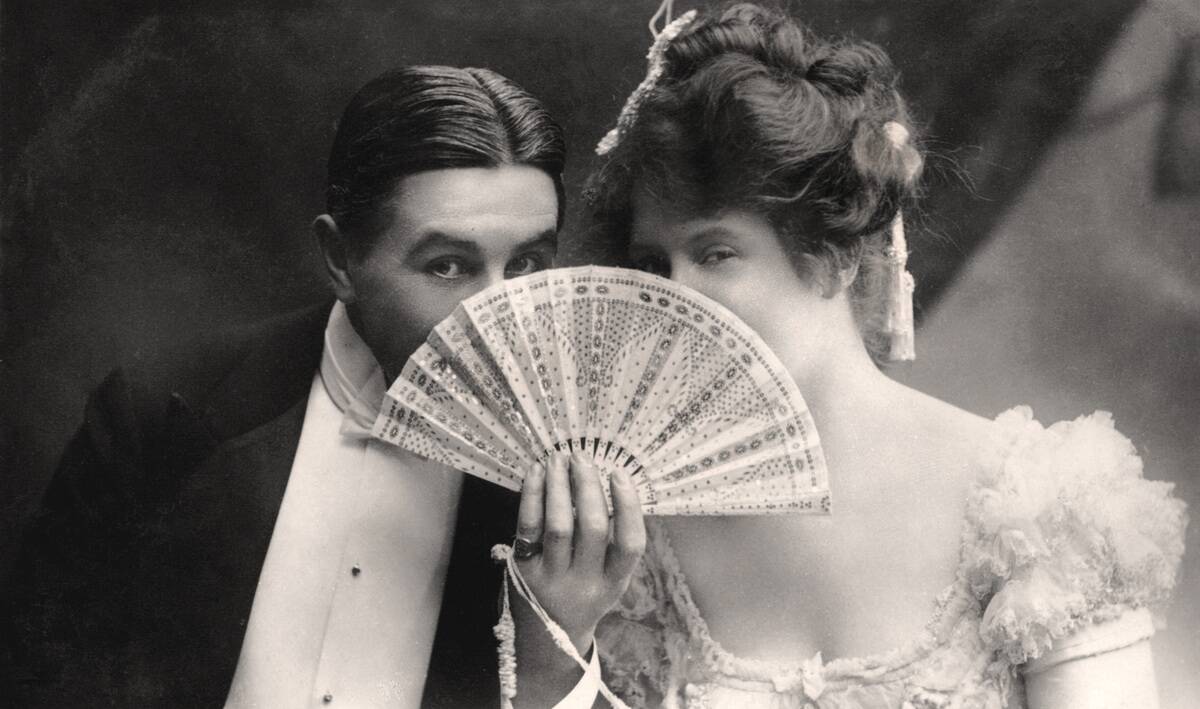
While Billie Burke and Farren Soutar may not be household names today, they were much more recognizable while acting in the popular musical comedy The Belle Of Mayfair. The play opened on 11 April 1906 and closed after 431 performances. Soutar was part of the original cast but Burke was not.
Although movie theaters did exist in America before 1900, they tended to be temporary affairs that flirted with what was then a new technology. Although permanent movie theaters like Thomas Edison’s Vitascope Theater in Buffalo, New York, did exist by 1897, they were incredibly few and far between.
Believe It Or Not, This Was Taken In The United States

This photo depicts Archie Roosevelt — son of then-president Theodore Roosevelt — befriending a police officer in 1902. Although the officer’s dress seems to resemble the classic “bobbies” patrolling British streets, police uniforms weren’t quite harmonized yet by the 1900s.
Although some American police organizations during this period included caps with their uniforms that more closely resemble what modern cops throughout the United States wear, some used uniforms that bore a much closer resemblance to their British counterparts.
Football Was Somehow An Even Rougher Game
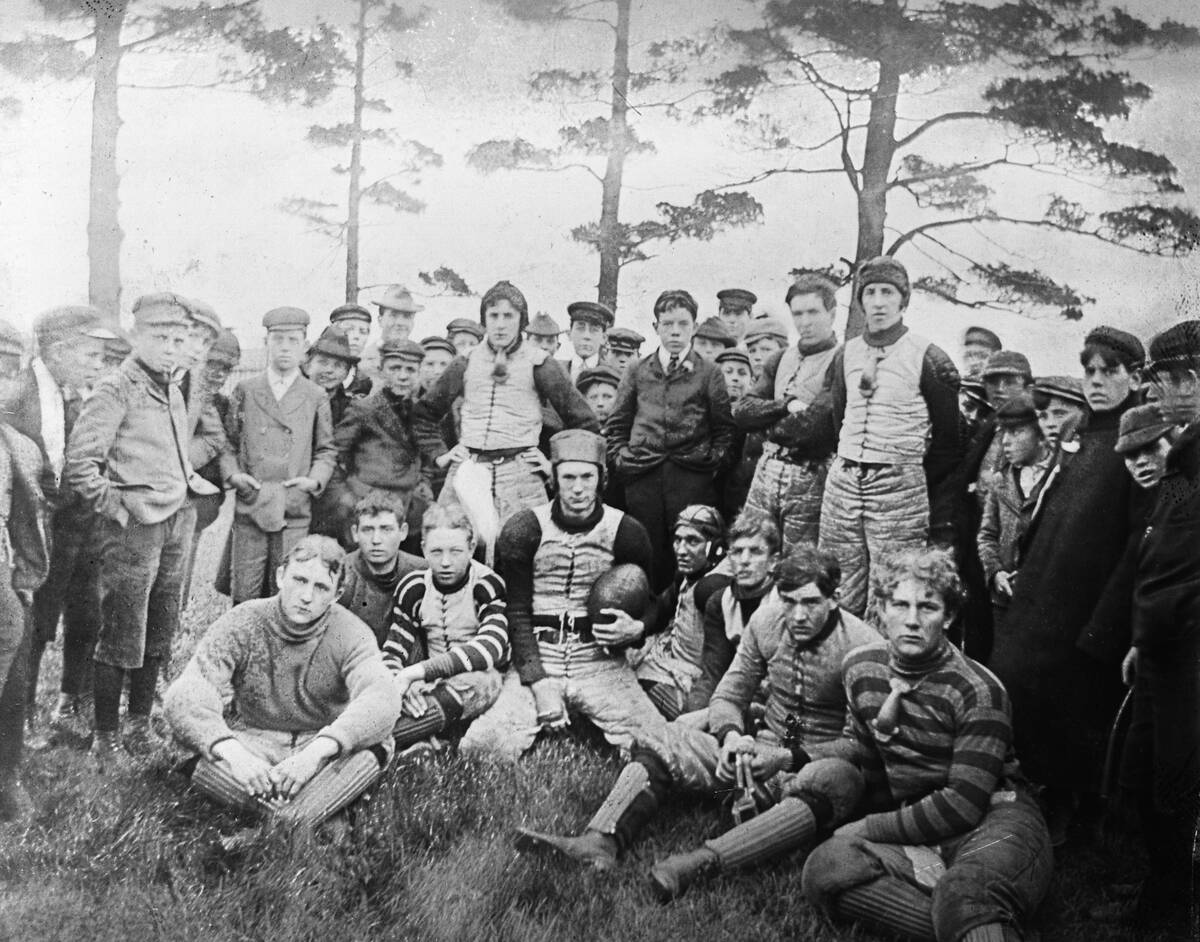
Even with the armor-like equipment modern football players wear, it is stunningly easy for things to go wrong enough while playing it to cause life-changing injuries. With that in mind, it’s a wonder that the sport survived to be played in modern times at all.
As we can see from this turn-of-the-century photo, the padding they used to wear was far less reinforced at the time. Moreover, those leather helmets were an iconic part of the game at the time but offered fairly minimal protection as well. They make the period easy to identify, though.
Zoos Were Apparently A Lot More Relaxed Back Then
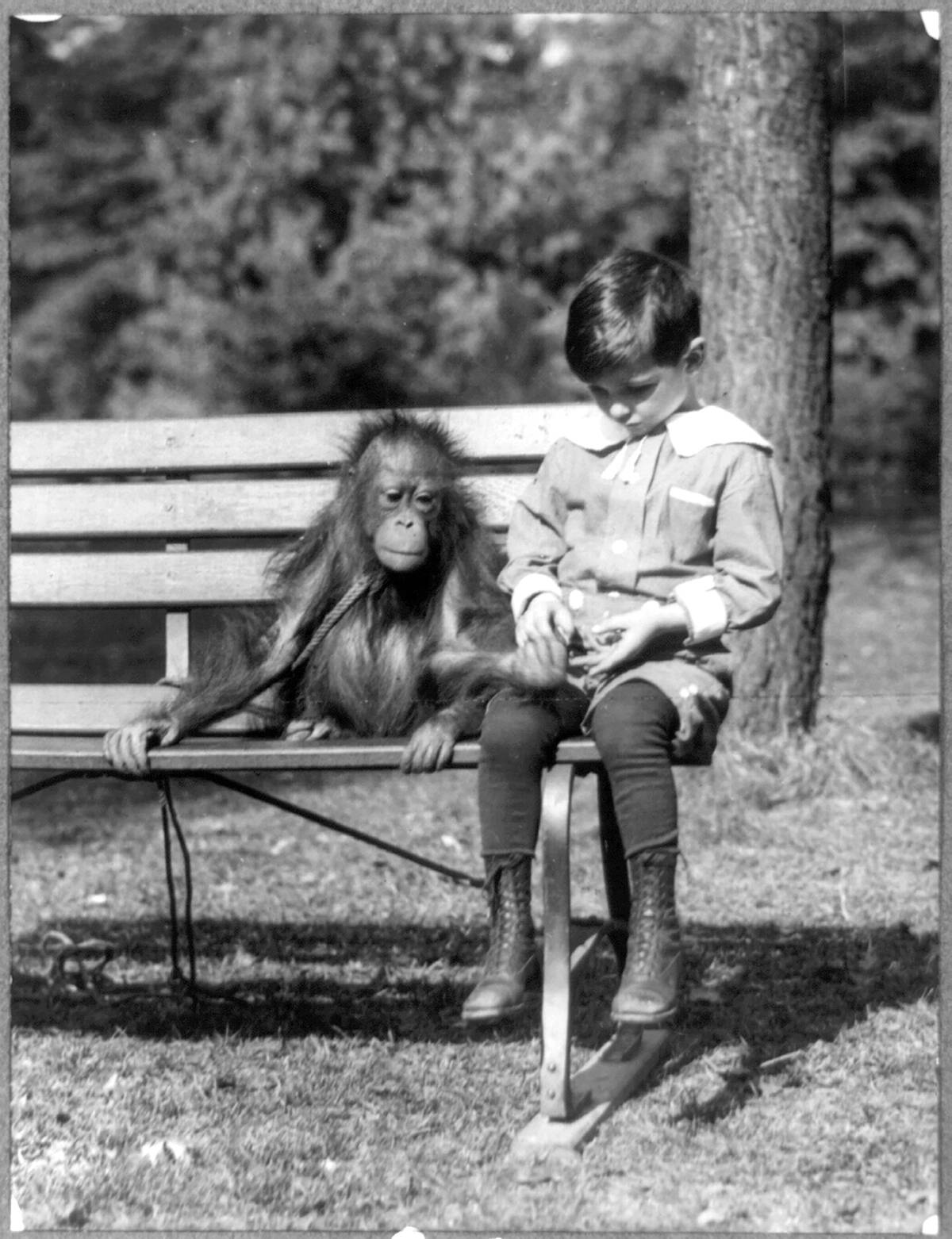
At the earliest, this photo was taken in 1909 but it could have been taken as late as 1932. Either way, it depicts a zoo visit that most zoo owners would consider out of the question today.
Nowadays, an animal like this wouldn’t have much contact with the zoo’s guests, unless one was reckless enough to climb into the enclosure. However, it seems that the dark side of human-animal interactions in this environment weren’t apparent at the time, as this boy is allowed to sit next to an orangutan on a simple park bench. Fortunately for everyone involved, their time together seemed wholesome and adorable.
This Bridge Was Older Than The American Government
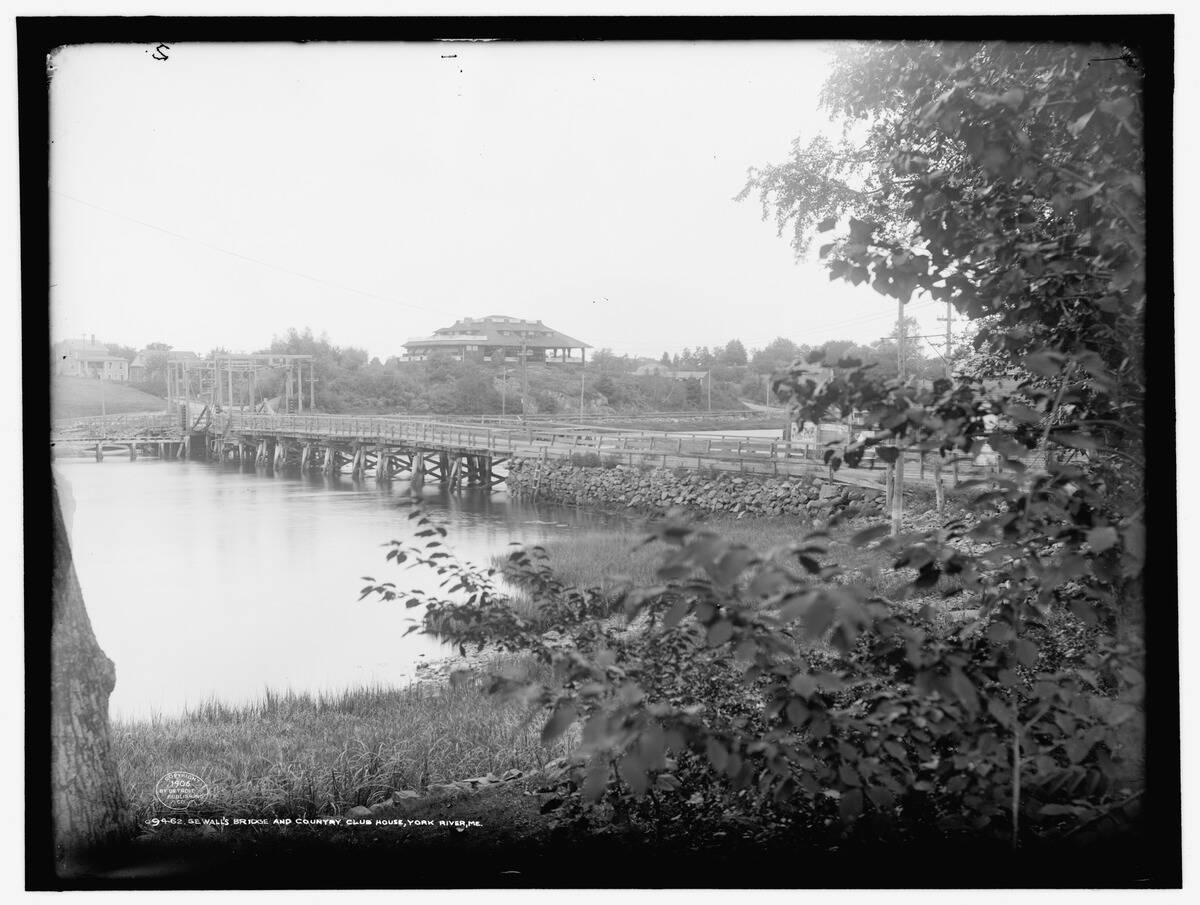
This photo captures Sewall’s Bridge, as well a country club located in York River, Maine. Although the photo was taken in 1906, the bridge itself is not only older than the camera, but also the nation it’s situated in. That’s because the wood-piling bridge was first constructed in 1761.
While it’s amazing that it remained in use for as long as it did, its time was starting to run out by the time of this photo. That’s because it stopped being used in 1934.
There Was No Crowd When This Statue Was Unveiled Either
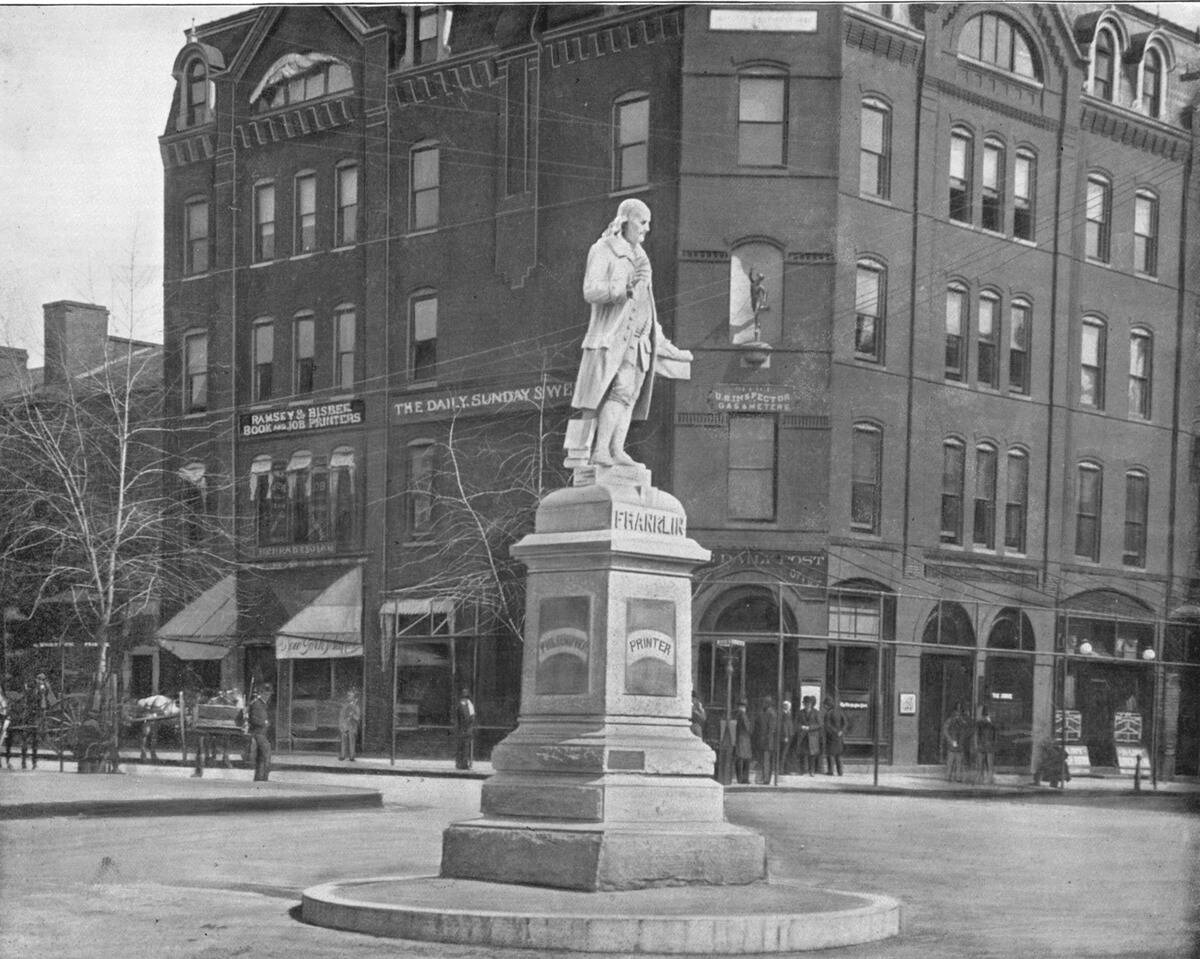
This statue of founding father Benjamin Franklin still stands at Washington, D.C.’s famous Pennsylvania Avenue, though not quite in the same spot it was first built. Yet, while it seems that those walking the streets of the nation’s capital had already taken the statue for granted by 1900, that wasn’t too far off from how it was initially received 11 years earlier.
Indeed, the statue was unveiled with little fanfare to a small gathering, but that wasn’t because of any particularly unpatriotic climate at the turn of the century. Instead, that was because the statue’s commissioner, Washington Post founder Stilson Hutchins, wanted an intimate unveiling ceremony.



